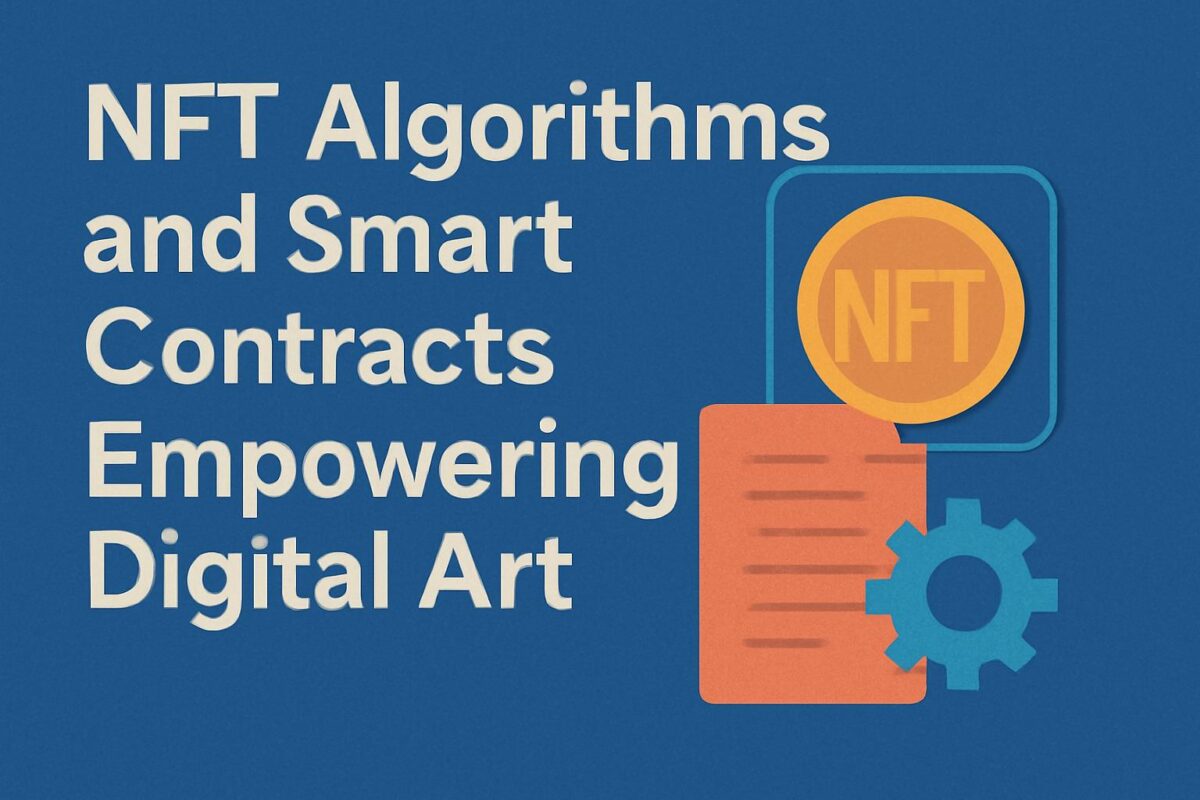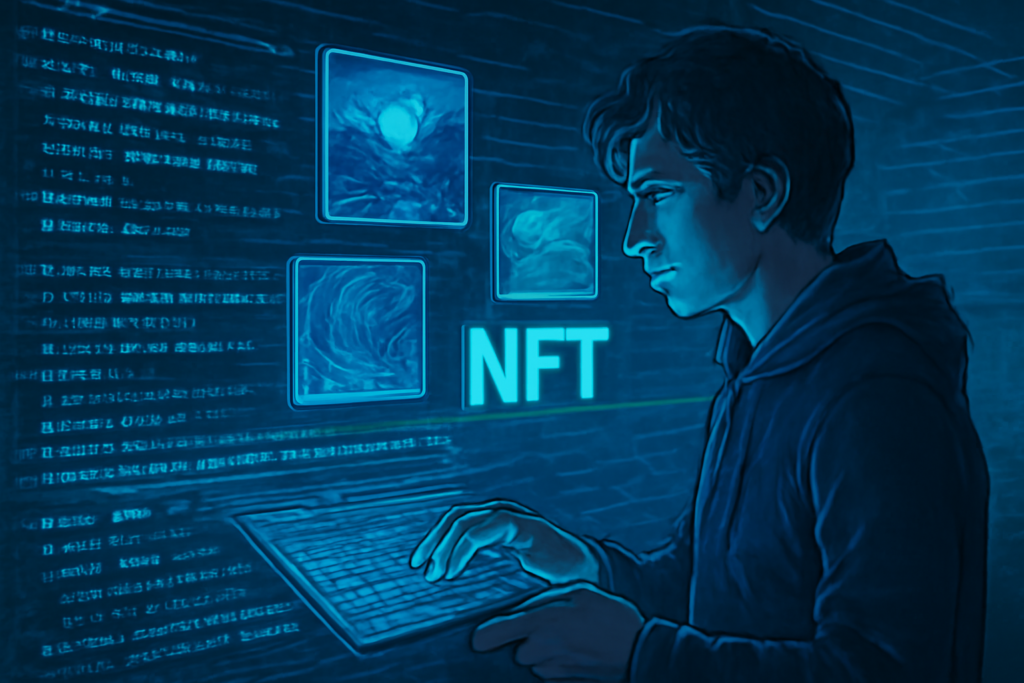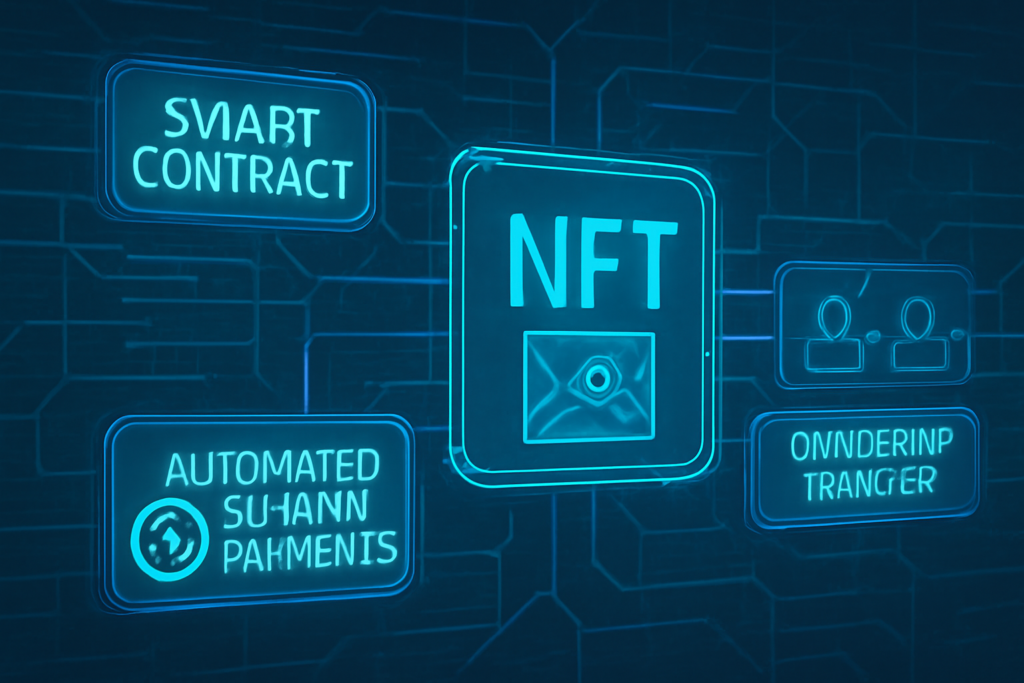NFT Algorithms and Smart Contracts Empowering Digital Art

Non-fungible tokens (NFTs) are transforming the digital art world, with smart contracts and NFT algorithms at their core. These automated blockchain programs ensure secure ownership, enforce transaction rules, and enable unique digital asset management. This blog explores how NFT algorithms and smart contracts power the vibrant ecosystem of digital art NFTs, offering transparency, trust, and innovation.
Understanding NFT Algorithms and Smart Contracts
NFT algorithms are sets of coded rules embedded within smart contracts, self-executing programs running on blockchain networks. They govern the creation, transfer, and verification of NFTs by:
- Encoding ownership details
- Managing royalty payments automatically
- Defining scarcity and provenance
Smart contracts remove intermediaries, ensuring trustless and transparent art transactions on decentralized networks like Ethereum.
How Smart Contracts Revolutionize Digital Art NFTs
Smart contracts enable:
- Automated royalties: Artists receive payments every time their NFT resells
- Programmable features: Dynamic NFTs that change based on external inputs
- Enforced scarcity: Immutable supply limits embedded in contract code
This automation enhances artist control and buyer confidence, fostering a fair digital art economy.
The Role of Blockchain Contracts in NFT Creation
Blockchain contracts underpin NFT minting and ownership by:
- Encoding metadata and digital asset links
- Ensuring tamper-proof provenance records
- Supporting interoperability across NFT marketplaces
These blockchain contracts guarantee authenticity and enable seamless trading of crypto art globally.
Innovations in NFT Coding and Digital Asset Algorithms
Developers continually refine NFT algorithms to incorporate:
- Advanced cryptography for security
- Metadata standards for richer asset descriptions
- Layer-2 solutions for faster, cheaper transactions
Such innovations improve the scalability and user experience of NFT platforms, making digital art more accessible.
ALSO READ: Securing NFT Ownership with Quantum-Resistant Cryptography
NFT Technology Driving the Future of Crypto Art
Emerging NFT technologies, like zero-knowledge proofs and decentralized storage, enhance privacy and data resilience. Smart contracts are evolving to support more complex interactions, such as fractional ownership and cross-chain NFTs, expanding digital art’s possibilities.



FAQs
Q1: What is a smart contract in NFTs?
A1: A smart contract is self-executing code on a blockchain that manages NFT creation, ownership, and transactions.
Q2: How do NFT algorithms ensure authenticity?
A2: They encode ownership and metadata on the blockchain, providing tamper-proof provenance.
Q3: Can smart contracts automate artist royalties?
A3: Yes, they can automatically distribute payments each time the NFT is resold.
Q4: Are NFT algorithms customizable?
A4: Developers can write custom smart contracts to add unique features and rules to NFTs.
Call to Action (CTA)
💡 Ready to explore the tech behind digital art NFTs? Subscribe now for deep dives into blockchain coding, smart contracts, and NFT innovation!